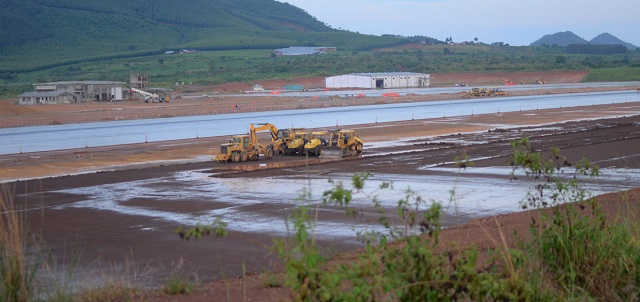
The country’s second airport is at 80% completion as the country seeks to boost growth and development in south western region
Kampala, Uganda | THE INDEPENDENT | Uganda’s second largest international airport is set to open up trade and investment opportunities in the oil region upon completion.
The Hoima-based airport whose construction now stands at 80% is expected to fasten transportation of oil and gas equipment as well as boost the growth and development of the planned industrial park.
With SBC Uganda Ltd as the contractor, Kabaale International Airport – whose construction started in 2018 – was expected to be completed in April this year for the first phase, to handle cargo planes. But the outbreak of coronavirus pandemic slowed down the construction work.
SBC Uganda spokesperson, Amos Muriisa, said on May 20 that the airport will be ready for use by February next year as the government’s new deadline.
He said the first phase of the project is expected to pave way for the importation of the heavy equipment, materials and machinery by the oil and gas companies which are currently in the initial stages of developing their own projects.
These include; field flow pipelines, feeder pipelines, the central processing facilities in the fields and at the Kabaale industrial park, the East African Crude Oil Pipeline and later the refinery, and well equipment for related industries expected to be born out of the oil industry.
The second phase, meanwhile, will include an expanded passenger terminal that will be expected to boost tourism and other activities leading to high passenger numbers.
Construction of the runway, which is 3.5 kilometres long and 45 meters wide is 95 percent complete, while the cargo terminal building, the limited-capacity passenger terminal building, the air rescue firefighting house, power substation house and the air ground lighting system are all between 78 and 90 percent complete.
The airport is designed to handle the largest cargo planes in the industry currently, and, according to SBC, the apron can host four of such aircraft at once.
The next nine months will also see the construction of housing for airport operators and the control tower start and completed, according to Muriisa.
However, there is fear that hundreds of Ugandans, including a good number of those from the local communities, will soon lose employment as the project comes to an end. Of more than 1000 workers, about 95 percent are Ugandans who will be released.
Muriisa says these are being advised to adjust to that they can be taken up by other construction projects expected in the area.
These include; the oil and gas processing facilities, the East African Oil Pipeline Project, refinery and other related activities in the industrial park. Other facilities expected to be constructed on the 29.7square kilometres of land are; shopping malls, recreational centres, health centres, technical colleges and accommodation among others.
Muriisa said the four years of participating in the airport construction project, it is expected that the workers have developed enough capacity to take up opportunities in other projects, whether they are private or government-owned.
At the beginning of the project, SBC was accused of employing more foreigners and Ugandans from outside the Albertine Grabben, which allegedly amounted to the violation of the National and Local Content policies.
But Muriisa said this was because it was hard to find the people from the local communities, with the specific skills required by the magnitude and complexity of the works being undertaken.
He says, however, that with the help of technical training institutes in the area, many had their skills upgraded and they were taken up. The East African nation hopes to produce the first oil in the first quarter of 2025.
****
 The Independent Uganda: You get the Truth we Pay the Price
The Independent Uganda: You get the Truth we Pay the Price




It will boost the country’s economy.